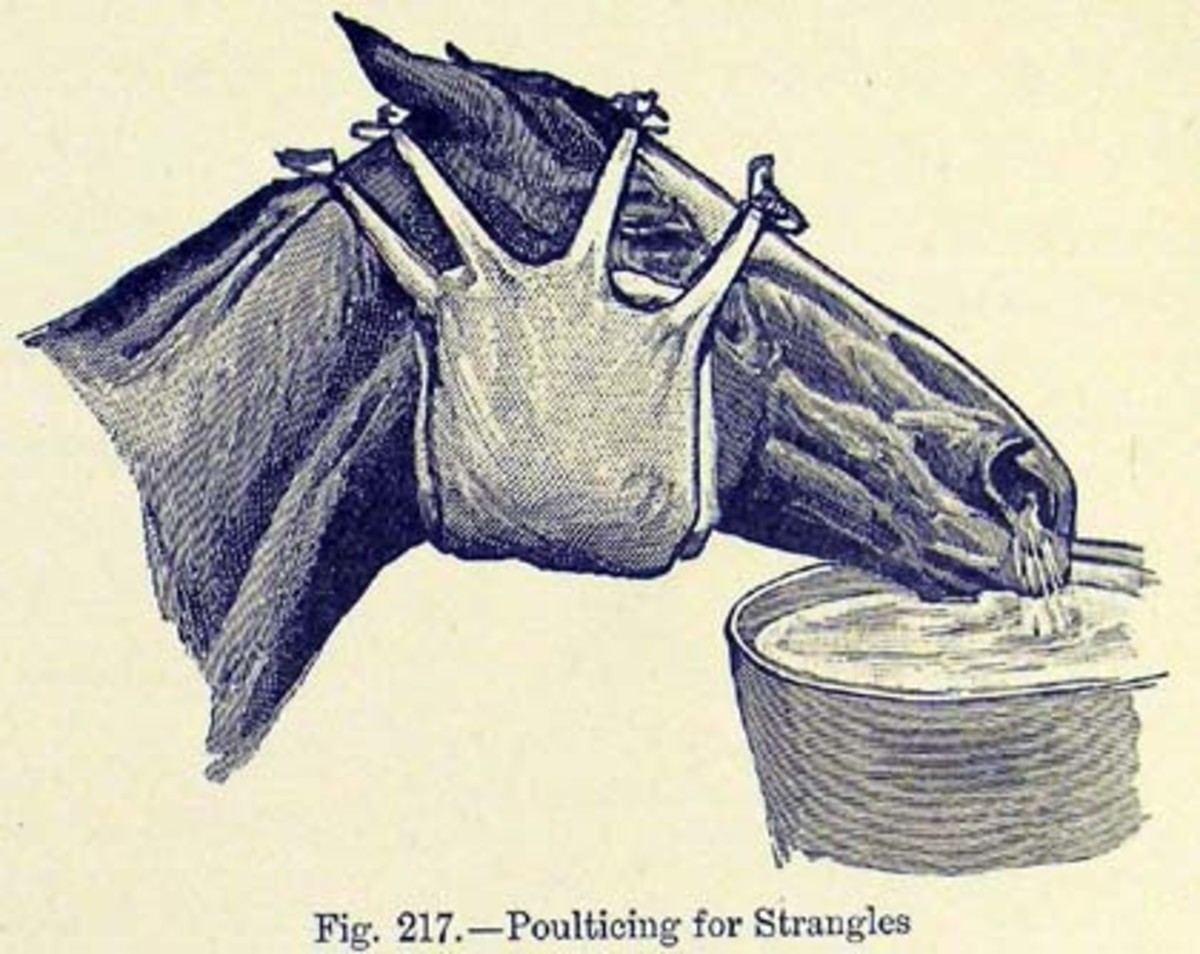
For some people, the city of Saratoga Springs, New York emerges only in the glorious month of August, when it becomes the fashionable place to be in the horse world. The finest Thoroughbred racehorses in North America travel to Saratoga to compete on the beautiful old racetrack. The city turns into a cultural mecca, with concerts, restaurants, museums and a horse-friendly ambiance second t0 no other place in the world.
So why are we writing about Saratoga in April?
Because Saratoga–the year-round horse town–is in the news. And it’s not very glamorous this time.
There are two racetracks in Saratoga. People usually hear about the Thoroughbred track, but the harness track at the Saratoga Casino and Raceway keeps horse activity levels up during the winter. This winter, however, the gates to the track are closed, and the racing has stopped.
Strangles loves Saratoga just as much as the rest of us do, it seems. More than a dozen horses at the track have been diagnosed with the highly-contagious Streptococcus Equi bacterial infection and racing was canceled for three weeks beginning on March 23.
Racetracks and state racing jurisdictions have implemented enhanced biosecurity measures, and are not allowing horses that have raced at Saratoga to ship in.
[VIDEOSINGLE type=”youtube” keyid=”ccqsGRcKEJk”, width=”560″, height=”344″]
Strangles is, for the most part, an acute respiratory infection characterized by a fever, lethargy, nasal discharge and swollen lymph nodes. Saratoga Casino and Raceway is taking all the necessary preventative measures to ensure the infection does not spread to other horses and racing is scheduled to resume April 11, 20212
Strangles spreads very quickly by air or direct/in-direct contact.? It is called “Strangles” because of the sound an ill horse makes as a result of profuse nasal discharge and swellings that form in the head and neck region.

According to the state’s animal health department, all horses currently stabled on the grounds were scheduled to be inoculated by their veterinarians by March 26.?? Intranasal spray vaccine is currently the preferred method for prevention.
“We have been in contact with the New York State Racing and Wagering Board regarding the issue,” said John Matarazzo, director of racing operations at the casino. “The Racing and Wagering Board has consulted with its Equine Drug Lab and is actively monitoring the situation.”
Harness tracks are different from Thoroughbred tracks in that many horses are hauled in to race, and because horses stabled at the track are cared for by people who also have horses at home. The potential for spreading the disease to the large “residential” population of horses in the Saratoga region was a dangerous situation that faced local horseowners who might normally have little contact with racehorses.
To address the needs of the community, Dr. Laura Javsicas of Upstate Equine Medical Center organized an educational event for horseowners in the region. She will be lecturing on Tuesday, April 3, at the hospital, which is located at 362 Rugg Road in Schuylerville, New York. The lecture begins at 7 p.m. Topics to be covered include: the outbreak, the disease, prevention, testing and biosecurity. There will be time for questions, as well.
Admission to the event is FREE.? Reservations are suggested, so? the clinic is asking that interested owners contact them to reserve a space by phoning 518-695-3744; via fax to 518-695-3465; or via email to [email protected].
For more information about the harness racing season in Saratoga, please visit www.saratogacasino.com
Read about The Meadowlands precautionary action on strangles from Saratoga
Read the AAEP’s informational page on strangles
Read about research on the cause and prevention of strangles underway at the Animal Health Trust in Great Britain.
Archival illustration courtesy of University of Glasgow Library, Department of Special Collections; photo of horse with nasal discharge courtesy of? School of Veterinary Medicine and Science, University of Nottingham (UK).








